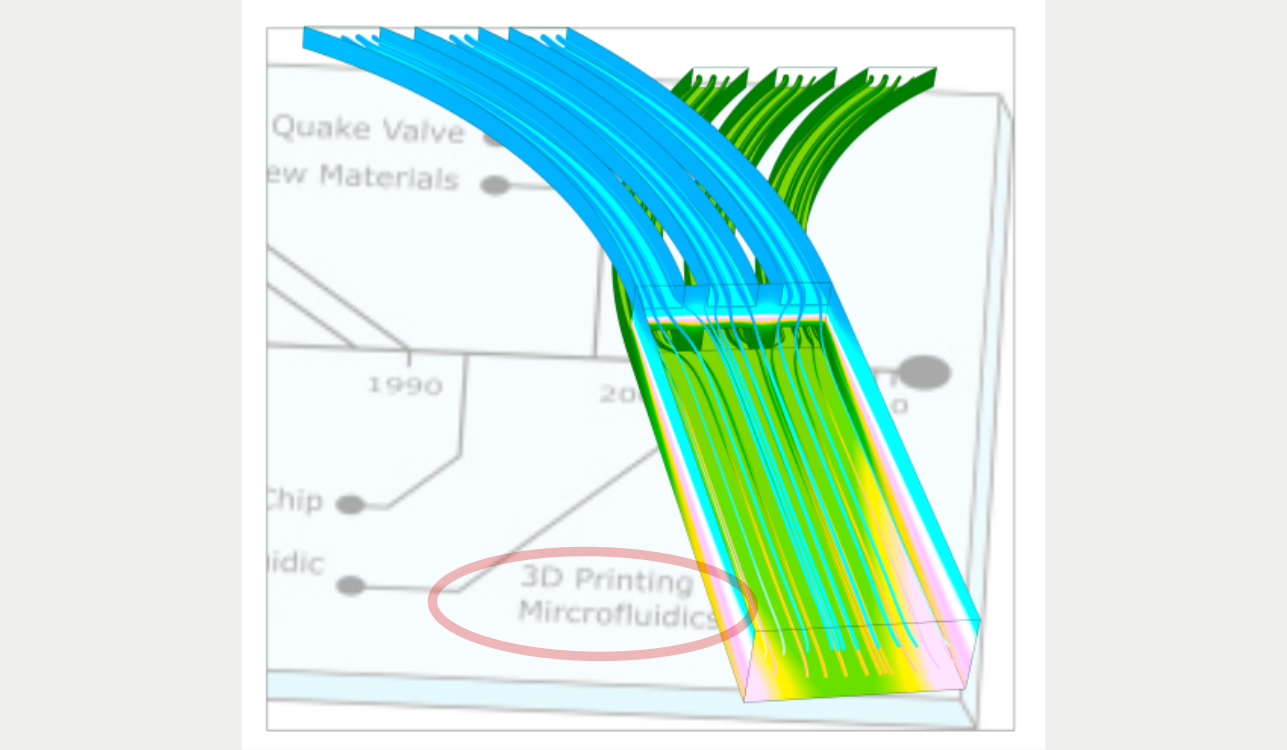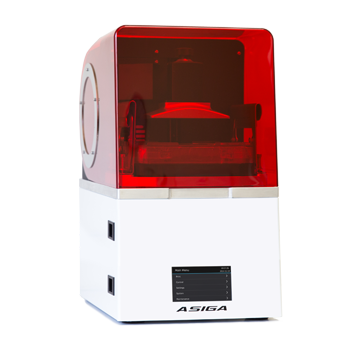
3D printing for microfluidics
Picture credit: Convery N, Gadegaard N, 30 years of microfluidics (2019), Micro and Nano Eng. 2
“My personal opinion is that in the next few years, nobody is going to be doing microfluidics in the clean room, there’s no reason to do so. 3D printing is a technology that can do it so much better — with better choice of materials, with the possibility to really make the structure that you would like to make. When you go to the clean room, many times you sacrifice the geometry you want to make. And the second problem is that it is incredibly expensive.”
-- L. F. Velásquez-García, Principal Research Scientist, MIT Microsystem Technology Laboratories, USA, MIT News
Microfluidics devices has been conventionally produced by molding poly(dimethylsiloxane) (PDMS) in a cleanroom environment using soft lithography technology. This involves a primarily manual process that include PDMS curing, assembly, bonding and inlet punching. The cleanroom requirement also makes the fabrication very expensive. This costly process is necessary in order to achieve the desirable properties such as biocompatibility, elastomeric, optical transparency, gas permeability, high precision, high resolution and so on.
In the recent decades, there has been an exciting rise in microfluidics chip commercialization and deployment of complex geometry for microfluidics system. Following this progress, the microfluidics community from academia and start-ups starts to look into an alternative to conventional PDMS fabrication. 3D printing or stereolithography, particularly the one with professional-grade digital light processing (DLP) technology, has shown consistent track record of successful adoption in many microfluidics laboratories. We present the most relevant requirements for the microfluidics system in the following table. You can see an overview of the strengths and limitations of different 3D printing technologies in the context of microfluidics fabrication, and then compare it with the PDMS fabrication method. Here, we have omitted 3D printing using two-photon-polymerization (2PP) despite of its resolution and precision capability due to its extremely high cost and turn-over time.
| PDMS soft lithography |
3D Printing Digital Light Processing (DLP) |
3D Printing Multi Jet Modelling (MJM) |
3D Printing Fused Deposition Modelling (FDM) |
|
| 3D geometry capability | Manual stacking an bonding of different layers with high challenge in layers alignment. This only works for orthogonal channel connections. Nozzles and coils are not possible | Unrestricted 3D capability | Unrestricted 3D capability | Only works for circular channel cross-sections and orthogonal junctions |
| Microchannels resolution |
Very high (optical diffraction from photolithography)
|
Depends on the quality of 3D printer engineering and machinery 100 µm channels were reported in a peer-reviewed work, 400 µm channels are standard |
Depends on the manual postprocessing skill. 750 µm is standard |
Depends on the quality of 3D printer engineering and machinery 350 µm channels were reported in a peer-reviewed work |
| Chemical composition of material | PDMS | DLP photopolymer or photoresin | MJM photopolymer or photoresin | Thermoplastics |
| Solvent compatibility | Water-impermeable, but not resistant to organic solvents | Water-impermeable and organic solvent resistant photoresins are available | Unknown | Thermoplastics are water resistant, with varying chemical resistance |
| Gas permeability | Very good gas permeability to remove air bubbles |
Poor gas permeability But air bubble removal can be done via bubble trap architecture |
Unknown |
Poor gas permeability But air bubble removal can be done via bubble trap architecture |
| Mechanical property | Elastomeric and isotropic | Photoresins with similar property with PDMS are available | Orientation can affect the elasticity | Highly anisotropic in between the layers |
| Optical clarity | Clear and transparent | Clear and transparent photoresins are available | Clear and transparent photoresins are available | Clear and transparent thermoplastics are available |
| Biocompatibility | Biocompatible | Biocompatible photoresins are available | Biocompatible photoresins are available | Biocompatible thermoplastics are available |
| Production automation | Not possible |
Semi-automated Postprocessing is needed to drain channels and remove support structures |
Semi-automated Postprocessing is needed to remove materials from channels |
Fully automated |
From this summary, it can be seen that the DLP 3D printing is capable of delivering the desirable properties achieved by PDMS soft lithography. With the benefit of the digital nature of the technique, its much lower cost (no cleanroom is needed) and its much higher throughput; the microfluidics are already in the era of 3D-printed microfluidics advances.
It is quite straightforward to see the case for adopting DLP 3D printing in your microfluidics laboratory. The next crucial step is choosing the right machines and equipments among the brands within this booming industry. The right machinery, engineering and customer support will ensure that the technology help you in realizing the full potential and impact of your microfluidics R&D.

